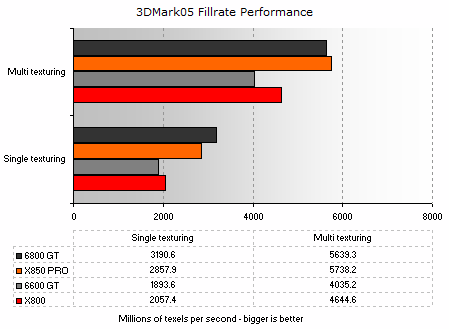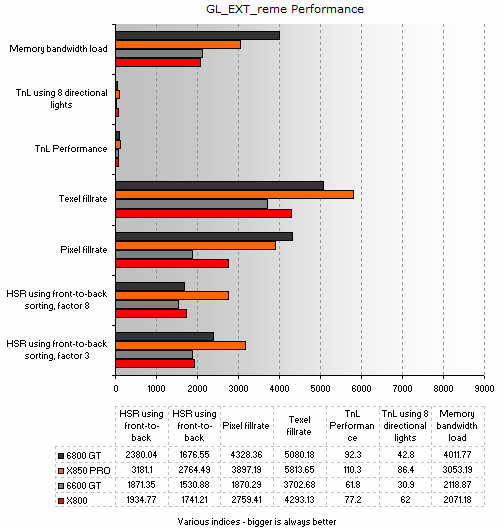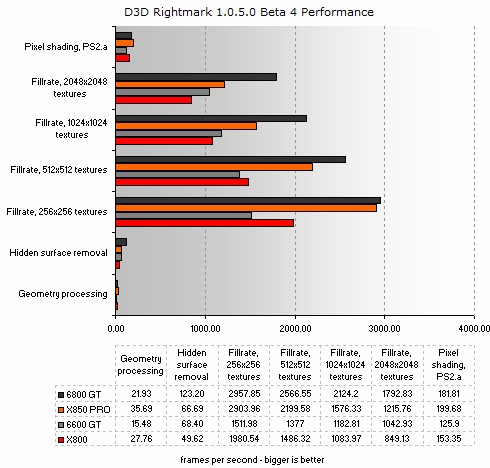Fillrate, GL_EXT_reme and Rightmark 1.0.5.0
Fillrate
Basic multi-texture fillrate scores give us an idea of efficiency when using the texture units, the score generated as a function of the GPU's clock speed. I use 3DMark05's latest texturing tests to measure basic fillrate.
Multi-texture fillrate as measured by 3DMark05 shows near 100% efficiency for everything. It shows that the hardware can texture at maximum speed when it has to, which is a basic building block of correct performance. Of course, it's shader unit efficiency that's the defining factor for many recent games, but it never hurts to get the basics right.
GL_EXT_reme
GL_EXT_reme uses simple OpenGL tests to stress the graphics card and find theoretical limits in a number of tests. It measures overdraw, basic texture cache efficiency when reusing a large texture, basic fillrate, geometry performance and hidden surface removal. In other words, most of the basic tasks a GPU performs to render 3D.
As we start to think about ranking the hardware in terms of speed, the X800 shows its hand versus 6600 GT in Humus's GL_EXT_reme tests. An extra fragment quad offsets its 100MHz core clock deficit in the majority of tests.
Rightmark 1.0.5.0

As texture size increases, the NVIDIA card's fillrates get better versus the competing Radeon. It's common for recent games to throw around large surfaces in memory, be they image textures, shadow textures or similar. Something to note when thinking about performance in games, whether you know texture sizes in your favourite titles or not. Theoretically current NVIDIA hardware has the edge as basic texture sizes get bigger.









